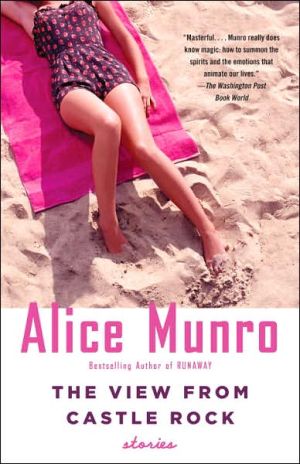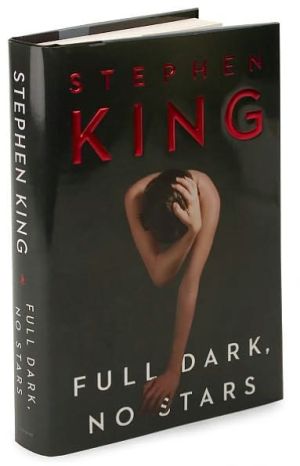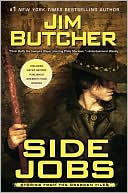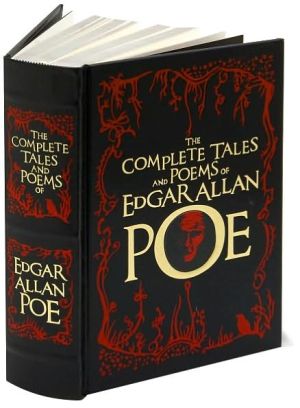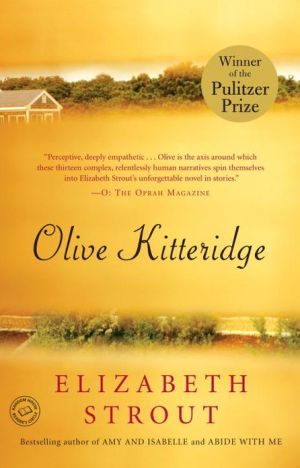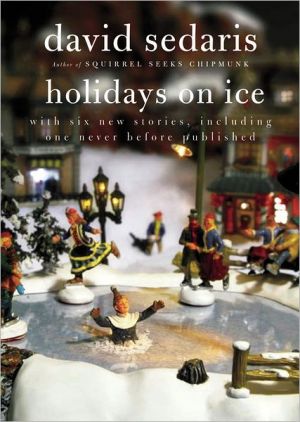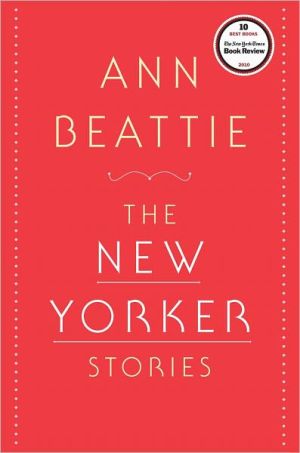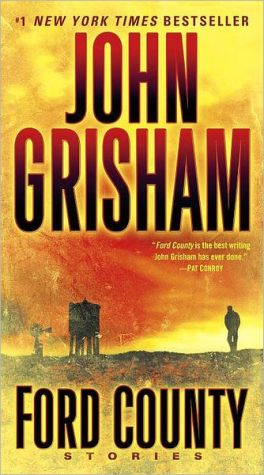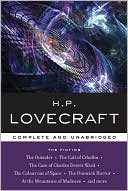The View from Castle Rock
A new collection of stories by Alice Munro is always a major event. This new collection — her most personal to date — is no exception.\ Alice Munro’s stories are always wonderful and so ingrained with truths about life that readers always want to know where they came from. In this book, Alice Munro tells us.\ In her Foreword (an unusual feature in itself), she explains how she, born Alice Laidlaw in Ontario, in recent years became interested in the history of her Laidlaw ancestors. Starting...
Search in google:
Alice Munro mines her rich family background, melding it with her own experiences and the transforming power of her brilliant imagination, to create perhaps her most powerful and personal collection yet.A young boy, taken to Edinburgh’s Castle Rock to look across the sea to America, catches a glimpse of his father’s dream. Scottish immigrants experience love and loss on a journey that leads them to rural Ontario. Wives, mothers, fathers, and children move through uncertainty, ambivalence, and contemplation in these stories of hopes, adversity, and wonder. The View from Castle Rock reveals what is most essential in Munro’s art: her compassionate understanding of ordinary lives.The New York Times - A. O. ScottAgain and again, Munro pieces together narratives out of frayed, handed-down material, including her own recollections and those of her mother and father, paying special attention to the details of small-town and rural life. Some of these stories—"Lying Under the Apple Tree," about an early romance, and "Hired Girl," about a term of service with a wealthy family vacationing on an island up north—are as shapely and satisfying as any she has written.
\ \ The View from Castle Rock\ \ \ \ By Alice Munro\ \ \ Random House\ \ \ Alice Munro\ All right reserved.\ \ ISBN: 1400042828\ \ \ \ \ Chapter One\ \ No Advantages\ This parish possesses no advantages. Upon the hills the soil is in many places mossy and fit for nothing. The air in general is moist. This is occasioned by the height of the hills which continually attract the clouds and the vapour that is continually exhaled from the mossy ground . . . The nearest market town is fifteen miles away and the roads so deep as to be almost impassable. The snow also at times is a great inconvenience, often for many months we can have no intercourse with mankind. And a great disadvantage is the want of bridges so that the traveller is obstructed when the waters are swelled . . . Barley oats and potatoes are the only crops raised. Wheat rye turnips and cabbage are never attempted . . .\ There are ten proprietors of land in this parish: none of them resides in it.\ Contribution by the Minister of Ettrick Parish, in the county of Selkirk, to the Statistical Account of Scotland, 1799\ \ The Ettrick Valley lies about fifty miles due south of Edinburgh, and thirty or so miles north of the English border, which runs close to the wall Hadrian built to keep out the wild people from the north. The Romans pushed farther, and built some sort of fortifications called Antonine's Wall between the Firth of Clyde and the Firth of Forth, but those did not last long. The land between the two walls has been occupied for a long time by amix of people--Celtic people, some of whom came from Ireland and were actually called Scots, Anglo-Saxons from the south, Norse from across the North Sea, and possibly some leftover Picts as well.\ The high stony farm where my family lived for some time in the Ettrick Valley was called Far-Hope. The word hope, as used in the local geography, is an old word, a Norse word-Norse, Anglo-Saxon, and Gaelic words being all mixed up together in that part of the country, as you would expect, with some old Brythonic thrown in to indicate an early Welsh presence. Hope means a bay, not a bay filled with water but with land, partly enclosed by hills, which in this case are the high bare hills, the near mountains of the Southern Uplands. The Black Knowe, Bodesbeck Law, Ettrick Pen--there you have the three big hills, with the word hill in three languages. Some of these hills are now being reforested, with plantations of Sitka spruce, but in the seventeenth and eighteenth centuries they would have been bare, or mostly bare--the great Forest of Ettrick, the hunting grounds of the Kings of Scotland, having been cut down and turned into pasture or waste heath a century or two before.\ The height of land above Far-Hope, which stands right at the end of the valley, is the spine of Scotland, marking the division of the waters that flow to the west into the Solway Firth and the Atlantic Ocean, from those that flow east into the North Sea. Within ten miles to the north is the country's most famous waterfall, the Grey Mare's Tail. Five miles from Moffat, which would be the market town to those living at the valley head, is the Devil's Beef Tub, a great cleft in the hills believed to be the hiding place for stolen cattle--English cattle, that is, taken by the reivers in the lawless sixteenth century. In the lower Ettrick Valley was Aikwood, the home of Michael Scott, the philosopher and wizard of the twelfth and thirteenth centuries, who appears in Dante's Inferno. And if that were not enough, William Wallace, the guerrilla hero of the Scots, is said to have hidden out here from the English, and there is a story of Merlin--Merlin--being hunted down and murdered, in the old forest, by Ettrick shepherds.\ (As far as I know, my ancestors, generation after generation, were Ettrick shepherds. It may sound odd to have shepherds employed in a forest, but it seems that hunting forests were in many places open glades.)\ Nevertheless the valley disappointed me the first time I saw it. Places are apt to do that when you've set them up in your imagination. The time of year was very early spring, and the hills were brown, or a kind of lilac brown, reminding me of the hills around Calgary. Ettrick Water was running fast and clear, but it was hardly as wide as the Maitland River, which flows past the farm where I grew up, in Ontario. The circles of stones which I had at first taken to be interesting remnants of Celtic worship were too numerous and well kept up to be anything but handy sheep pens.\ I was travelling by myself, and I had come from Selkirk on the twice-a-week Shoppers' Bus, which took me no farther than Ettrick Bridge. There I wandered around, waiting for the postman. I'd been told that he would take me up the valley. The chief thing to be seen in Ettrick Bridge was a sign on a closed shop, advertising Silk Cut. I couldn't figure out what that might be. It turned out to be a well-known brand of cigarette.\ After a while the postman came along and I rode with him to Ettrick Church. By that time it had begun to rain, hard. The church was locked. It disappointed me, too. Having been built in 1824, it did not compare, in historic appearance, or grim character, to the churches I had already seen in Scotland. I felt conspicuous, out of place, and cold. I huddled by the wall till the rain let up for a bit, and then I explored the churchyard, with the long wet grass soaking my legs.\ There I found, first, the gravestone of William Laidlaw, my direct ancestor, born at the end of the seventeenth century, and known as Will O'Phaup. This was a man who took on, at least locally, something of the radiance of myth, and he managed that at the very last time in history--that is, in the history of the people of the British Isles--when a man could do so. The same stone bears the names of his daughter Margaret Laidlaw Hogg, who upbraided Sir Walter Scott, and of Robert Hogg, her husband, the tenant of Ettrickhall. Then right next to it I saw the stone of the writer James Hogg, who was their son and Will O'Phaup's grandson. He was known as The Ettrick Shepherd. And not far from that was the stone of the Reverend Thomas Boston, at one time famous throughout Scotland for his books and preaching, though fame never took him to any more important ministry.\ Also, among various Laidlaws, a stone bearing the name of Robert Laidlaw, who died at Hopehouse January 29th 1800 aged seventy-two years. Son of Will, brother of Margaret, uncle of James, who probably never knew that he would be remembered by his link to these others, any more than he would know the date of his own death.\ My great-great-great-great-grandfather.\ As I was reading these inscriptions the rain came on again, lightly, and I thought I had better start to walk back to Tushielaw, where I was to catch the school bus for my return ride to Selkirk. I couldn't loiter, because the bus might be early, and the rain might get heavier.\ I was struck with a feeling familiar, I suppose, to many people whose long history goes back to a country far away from the place where they grew up. I was a naive North American, in spite of my stored knowledge. Past and present lumped together here made a reality that was commonplace and yet disturbing beyond anything I had imagined.\ \ MEN OF ETTRICK\ Will O'Phaup\ Here lyeth William Laidlaw, the far-famed Will o' Phaup, who for feats of frolic, agility and strength, had no equal in his day . . .\ Epitaph composed by his grandson, James Hogg, on Will O'Phaup's tombstone in Ettrick Kirkyard.\ \ His name was William Laidlaw, but his story-name was Will O'Phaup, Phaup being simply the local version of Far-Hope, the name of the farm he took over at the head of Ettrick Valley. It seems that Far-Hope had been abandoned for years when Will came to inhabit it. The house, that is, had been abandoned, because it was situated so high up at the end of the remote valley, and got the worst of the periodic winter storms and the renowned snowfall. The house of Potburn, the next one to it, lower down, was until recently said to be the highest inhabited house in all of Scotland. It now stands deserted, apart from the sparrows and finches busy around its outbuildings.\ The land itself would not have belonged to Will, it would not even have been leased to him--he would have rented the house or got it as part of his shepherd's wages. It was never worldly prosperity that he was after.\ Only Glory.\ He was not native to the valley, though there were Laidlaws there, and had been since the first records were kept. The earliest man of that name I have come across is in the court records of the thirteenth century, and he was up on charges of murdering another Laidlaw. No prisons in those days. Just dungeons, mainly for the upper class, or people of some political importance. And summary executions-but those happened mostly in times of large unrest, as during the border raids of the sixteenth century, when a marauder might be hanged at his own front door, or strung up in Selkirk Square, as were sixteen cattle thieves of the same name--Elliott--on a single day of punishment. My man got off with a fine.\ Will was said to be "one of the old Laidlaws of Craik"--about whom I have not been able to discover anything at all, except that Craik is an almost disappeared village on a completely disappeared Roman road, in a nearby valley to the south of Ettrick. He must have walked over the hills, a lad in his teens, looking for work. He had been born in 1695, when Scotland was still a separate country, though it shared a monarch with England. He would have been twelve years old at the time of the controversial Union, a young man by the time of the bitter failed Jacobite Rebellion of 1715, a man deep into middle age by the time of Culloden. There is no telling what he thought of those events. I have a feeling that his life was lived in a world still remote and self-contained, still harboring its own mythology and local wonders. And he was one of them.\ The first story told of Will is about his prowess as a runner. His earliest job in the Ettrick Valley was as shepherd to a Mr. Anderson, and this Mr. Anderson had noted how Will ran straight down on a sheep and not roundabout when he wanted to catch it. So he knew that Will was a fast runner, and when a champion English runner came into the valley Mr. Anderson wagered Will against him for a large sum of money. The English fellow scoffed, his backers scoffed, and Will won. Mr. Anderson collected a fine heap of coins and Will for his part got a gray cloth coat and a pair of hose.\ Fair enough, he said, for the coat and hose meant as much to him as all that money to a man like Mr. Anderson.\ Here is a classic story. I heard versions of it--with different names, different feats--when I was a child growing up in Huron County, in Ontario. A stranger arrives full of fame, bragging of his abilities, and is beaten by the local champion, a simple-hearted fellow who is not even interested in a reward.\ These elements recur in another early story, in which Will goes over the hills to the town of Moffat on some errand, unaware that it is fair day, and is cajoled into taking part in a public race. He is not well dressed for the occasion and during the running his country breeches fall down. He lets them fall, kicks his way out of them, and continues running in nothing but a shirt, and he wins. There is a great fuss made of him and he gets invited to dinner in the public house with gentlemen and ladies. By this time he must have had his pants on, but he blushes anyway, and will not accept, claiming to be mortified in front of such leddies.\ Maybe he was, but of course the leddies' appreciation of such a well-favored young athlete is the scandalous and enjoyable point of the story.\ Will marries, at some point, he marries a woman named Bessie Scott, and they begin to raise their family. During this period the boy-hero turns into a mortal man, though there are still feats of strength. A certain spot in the Ettrick River becomes "Will's Leap" to commemorate a jump he made, to get help or medicine for someone who was sick. No feat, however, brought him any money, and the pressures of earning a living for his family, combined with a convivial nature, seem to have turned him into a casual bootlegger. His house is well situated to receive the liquor that is being smuggled over the hills from Moffat. Surprisingly this is not whiskey, but French brandy, no doubt entering the country illegally by way of the Solway Firth--as it will continue to do despite the efforts late in the century of Robert Burns, poet and exciseman. Phaup becomes well known for occasions of carousing or at least of high sociability. The hero's name still stands for honorable behavior, strength, and generosity, but no more for sobriety.\ Bessie Scott dies fairly young, and it is probably after her death that the parties have begun. The children will have been banished, most likely, to some outbuilding or the sleeping loft of the house. There does not appear to have been any serious outlawry or loss of respectability. The French brandy may be worth noting, though, in the light of the adventures that come upon Will in his maturity.\ \ \ \ \ \ \ \ Excerpted from The View from Castle Rock\ by Alice Munro Excerpted by permission.\ All rights reserved. No part of this excerpt may be reproduced or reprinted without permission in writing from the publisher.\ Excerpts are provided by Dial-A-Book Inc. solely for the personal use of visitors to this web site.\ \
Foreword Part One / No AdvantagesNo Advantages The View from Castle Rock Illinois The Wilds of Morris Township Working for a Living Part Two / HomeFathers Lying Under the Apple Tree Hired Girl The Ticket Home What Do You Want to Know For? EpilogueMessenger
\ From Barnes & NobleLike many of the best writers, Alice Munro borrows from life to create a brilliant fictional universe. Although her short stories are not strictly autobiographical, many are set in the Canada of her hardscrabble youth and peopled with characters whose life experiences parallel her own. However, in The View from Castle Rock, it's clear Munro has done something different, if only because she says as much in the book's foreword. Asembling material from her family's Scottish immigrant history and reworking an older story cycle centered on her own self, Munro weaves autobiography into a stellar collection of intimate, affecting tales that (in a statement of full disclosure) "pay more attention to the truth of a life than fiction usually does. But not enough to swear on." Disgraced "memoirist" James Frey would have done well to follow suit.\ \ \ \ \ A. O. ScottAgain and again, Munro pieces together narratives out of frayed, handed-down material, including her own recollections and those of her mother and father, paying special attention to the details of small-town and rural life. Some of these stories—"Lying Under the Apple Tree," about an early romance, and "Hired Girl," about a term of service with a wealthy family vacationing on an island up north—are as shapely and satisfying as any she has written.\ —The New York Times\ \ \ Geraldine BrooksThere are no pyrotechnics in [the prose], very little poetry. The few similes are apt but not dazzlingly so. There is suspense, but it is contrived without resort to any obvious devices. In short, Munro is the illusionist whose trick can never be exposed. And that is because there is no smoke, there are no mirrors. Munro really does know magic: how to summon the spirits and the emotions that animate our lives.\ — The Washington Post\ \ \ \ \ Publishers WeeklyTen collections of stories and one novel have made Alice Munro one of the most praised fiction writers of our time. In The View from Castle Rock her full range of gifts is on display: indelible characters, deep insights about human behavior and relationships, vibrant prose, and seductive, suspenseful storytelling. Munro, in a foreword, tells how, a decade ago, she began looking into her family history, going all the way back to 18th-century Scotland. This material eventually became the stories presented here in part 1, "No Advantages." Munro also worked on "a special set of stories," none of which she included in previous collections, because they were "rather more personal than the other stories I had written." They now appear here in part 2, "Home." With both parts, Munro says, she has had a free hand with invention. Munro has used personal material in her fiction before, but at 75, she has given us something much closer to autobiography. Much of the book concerns people who have died, and places and ways of life that no longer exist or have been completely transformed, and though Munro is temperamentally unsentimental the mood is often elegiac. One difficulty that can arise with this kind of hybrid work is that the reader is likely to be distracted by the itch to know whether an event really occurred, or how much has been made up or embellished. In the title story, the reader is explicitly told that almost everything has been invented, and this enthralling multilayered narrative about an early 19th-century Scottish family's voyage to the New World is the high point of the collection. On the other hand, "What Do You Want to Know For?" at the heart of which is an account of a cancer scare Munro experienced, reads like pure memoir and seems not only thin by comparison but insufficiently imagined as a short story. Perhaps none of the stories here is quite up to the mastery of earlier Munro stories such as "The Beggar Maid" or "The Albanian Virgin." But getting this close to the core of the girl who would become the master is a privilege and a pleasure not to be missed. And reliably as ever when the subject is human experience, Munro's stories-whatever the proportions of fiction and fact-always bring us the truth. (Nov.) Sigrid Nunez's most recent novel, The Last of Her Kind, will be published in paperback by Picador in December. Copyright 2006 Reed Business Information.\ \ \ \ \ Publishers WeeklyThe beauty of Munro's writing is greatly enhanced by audio. Farr is a fine reader in every respect but one—her precise pronunciation of each syllable of every word is often distracting and impedes the flow of Munro's conversational prose, so integral a part of her literary achievement. Otherwise, Farr is an intelligent and expressive reader admirably able to handle a variety of characters and accents. Munro's characters and settings have always come out of her rural Canadian upbringing, but this time she fuses autobiography with fiction. The form arises from a conscious search for roots, for family history derived from journals, letters, town records, cemeteries, distant relatives and close neighbors in Scotland, Canada and the U.S. Each selected story is unabridged, and most of the exclusions are the more biographical ones, though the book is not so long that any needed to be cut. As always, Munro's remarkable insights and exquisite storyteller's voice come through, echoing our need to discover and connect to our own dead people, and therefore to life. Simultaneous release with the Knopf hardcover (Reviews, Sept. 25). (Dec.)\ Copyright 2007 Reed Business Information\ \ \ \ \ Library JournalWith this new collection, Munro (Runaway) more than lives up to her reputation as a master of short fiction. In 12 exquisitely constructed tales, she draws on family lore and letters to interpret the history of her Laidlaw relatives, a tough bunch from Scotland's Ettrick Valley that eventually emigrated to the New World. The title story, set in 1818, details a transatlantic voyage undertaken by six Laidlaws for whom ocean sailing is a totally new experience. Their struggles in adjusting to shipboard life anticipate challenges ahead in America as their fears and hopes culminate in the arrival of baby Isabel, all her life to be known as one "born at sea." In "No Advantages," a modern-day narrator's visit to Ettrick reveals what the family gained (and perhaps lost) by leaving the legend-haunted valley, while other stories explore how the harsh realities of wilderness pioneering affect several generations. All the narratives exhibit Munro's keen eye for realistic details and her ability to illuminate the depths of seemingly mundane lives and relationships. Highly recommended. Starr E. Smith, Fairfax Cty. P.L., VA Copyright 2006 Reed Business Information.\ \
